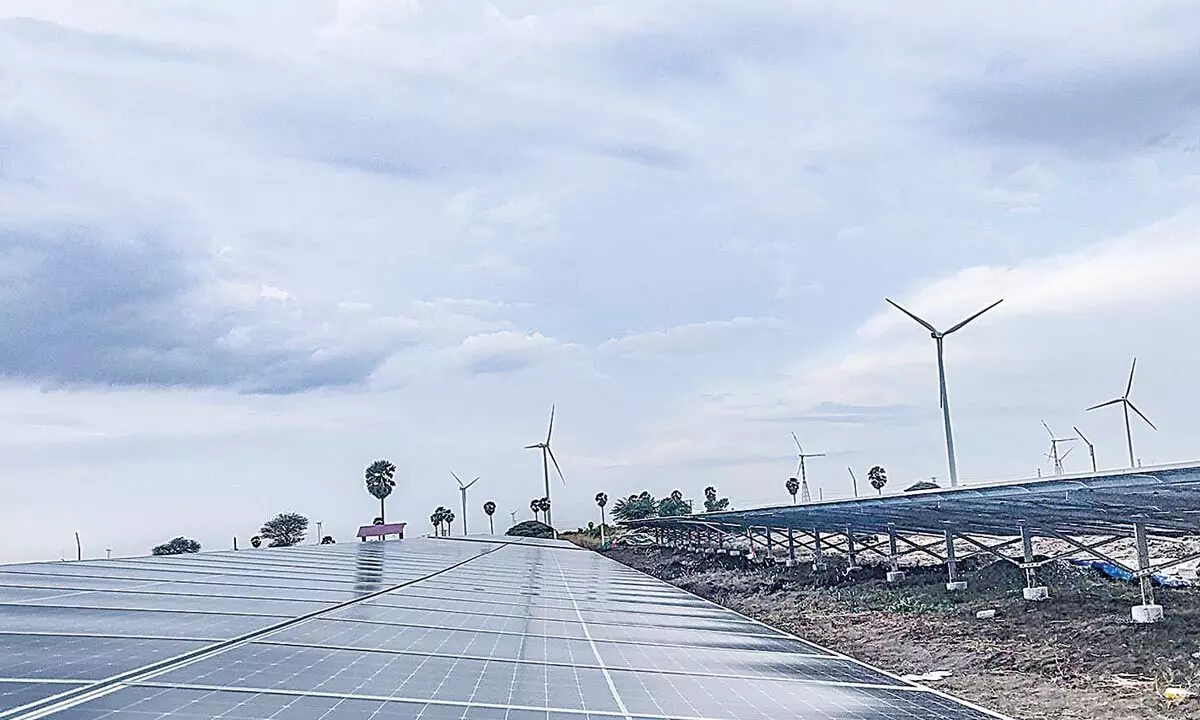Further solar boost needed to enhance total installed renewable capacity
Govt must promote rooftop installations for a more secure tomorrow
image for illustrative purpose

Taking a look at India’s overall renewable energy landscape, India's installed renewable energy capacity, including large hydropower projects, stood at 167 GW, accounting for 41 per cent of the overall power mix at the end of December 2022
The sunny side is up, all over again. India added 13 gigawatts (GW) of solar capacity in the calendar year (CY) 2022, a 27 per cent increase year-over-year (YoY), compared to 10.2 GW installed in CY 2021.
It should be noted that during CY 2022, large-scale solar projects accounted for 87 per cent of installations and saw a 33 per cent surge YoY. India's cumulative installed solar capacity now stands at 63 GW.
However, amid this rosy scenario one must remember that there are at least two areas that are a matter of concern. For one, rooftop installations, decreased by 3.7 per cent YoY.
"Though impressive, record solar capacity additions in 2022 were barely half the 27 GW in annual installations needed to meet the 280 GW target by 2030. Policies must be quickly retooled and hurdles removed so as to double the annual pace of installations and attract the needed investments," said Raj Prabhu, CEO of Mercom Capital Group, the US-headquartered clean energy research firm.
Going by the annual India Solar Market Update by Mercom, the country’s large-scale solar project pipeline stood at 58 GW, with another 51 GW of projects tendered and pending auction at the end of 2022. Rajasthan, Karnataka, and Gujarat were the top three states for cumulative large-scale solar capacity accounting for 54 per cent of installations in the country as of December 2022. Rajasthan led large-scale solar capacity additions.
Taking a look at India’s overall renewable energy landscape, India's installed renewable energy capacity, including large hydropower projects, stood at 167 GW, accounting for 41 per cent of the overall power mix at the end of December 2022. Newly installed solar capacity in the year touched a new high, making up 82 per cent of all new power capacity in 2022.
Solar now accounts for 15 per cent of India's total installed power capacity and almost 38 per cent of the total installed renewable capacity as of 2022 while together wind and solar made up 93 per cent of new power capacity additions.
Interestingly, there has been a rise in the average cost of projects throughout CY 2022 due to higher module prices and supply constraints. The average large-scale system costs in Q4 2022 increased by 7.3 per cent YoY making it an unprecedented ten quarters of project cost increases in a row.
In another significant development, solar tenders increased 23 per cent YoY, while auctions fell 29 per cent compared to 2021. Implementation of Basic Customs Duty (BCD), shortage of modules enlisted under the ALMM, and various policy announcements and amendments resulted in lower auction activity in 2022.
There are indications that the Centre may lift the requirement of ALMM-approved modules for domestic solar project development for two years. If this happens, a significant project capacity stands to benefit from the expected increase in module availability in 2023 and 2024, points out Prabhu.

